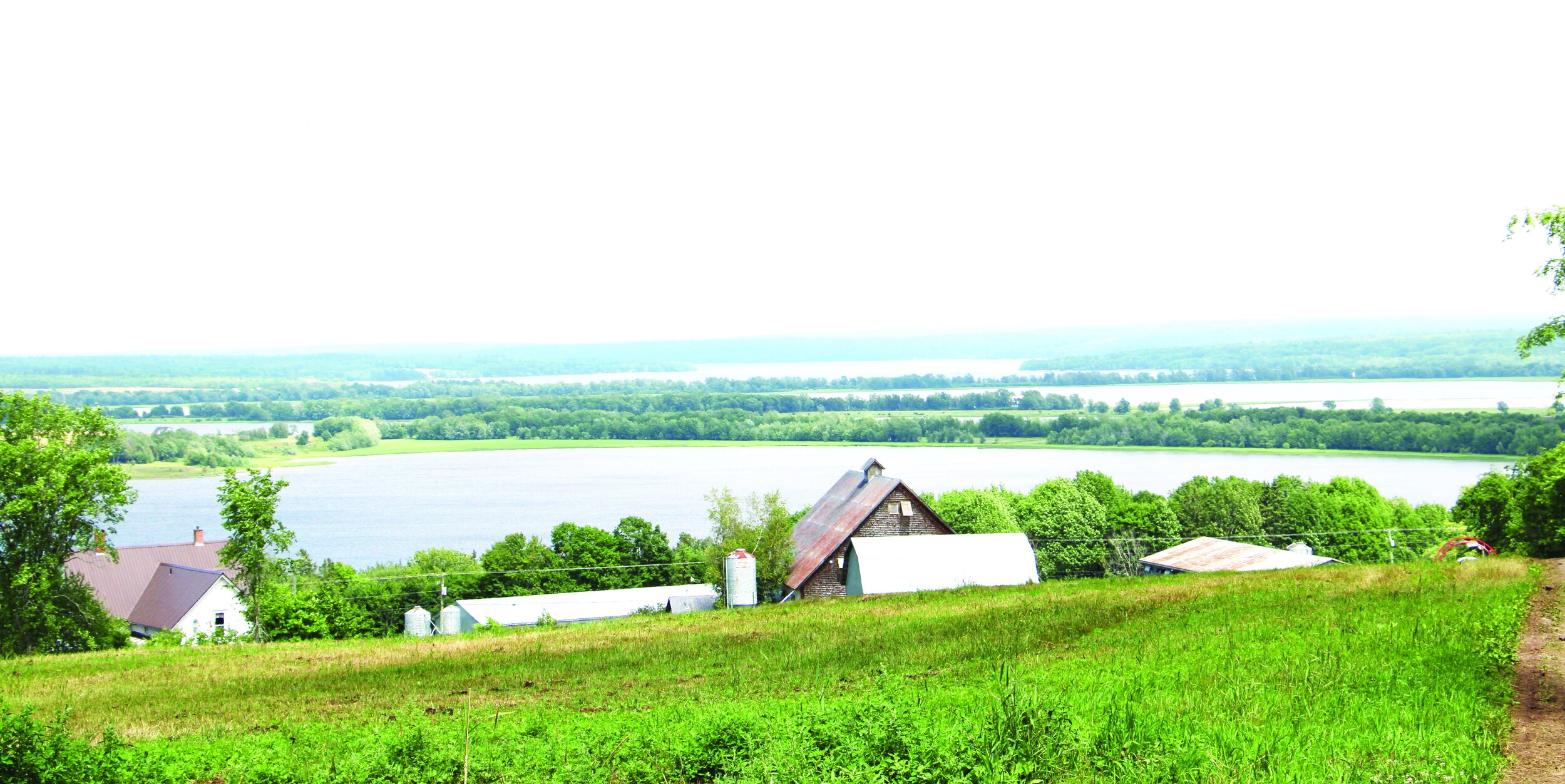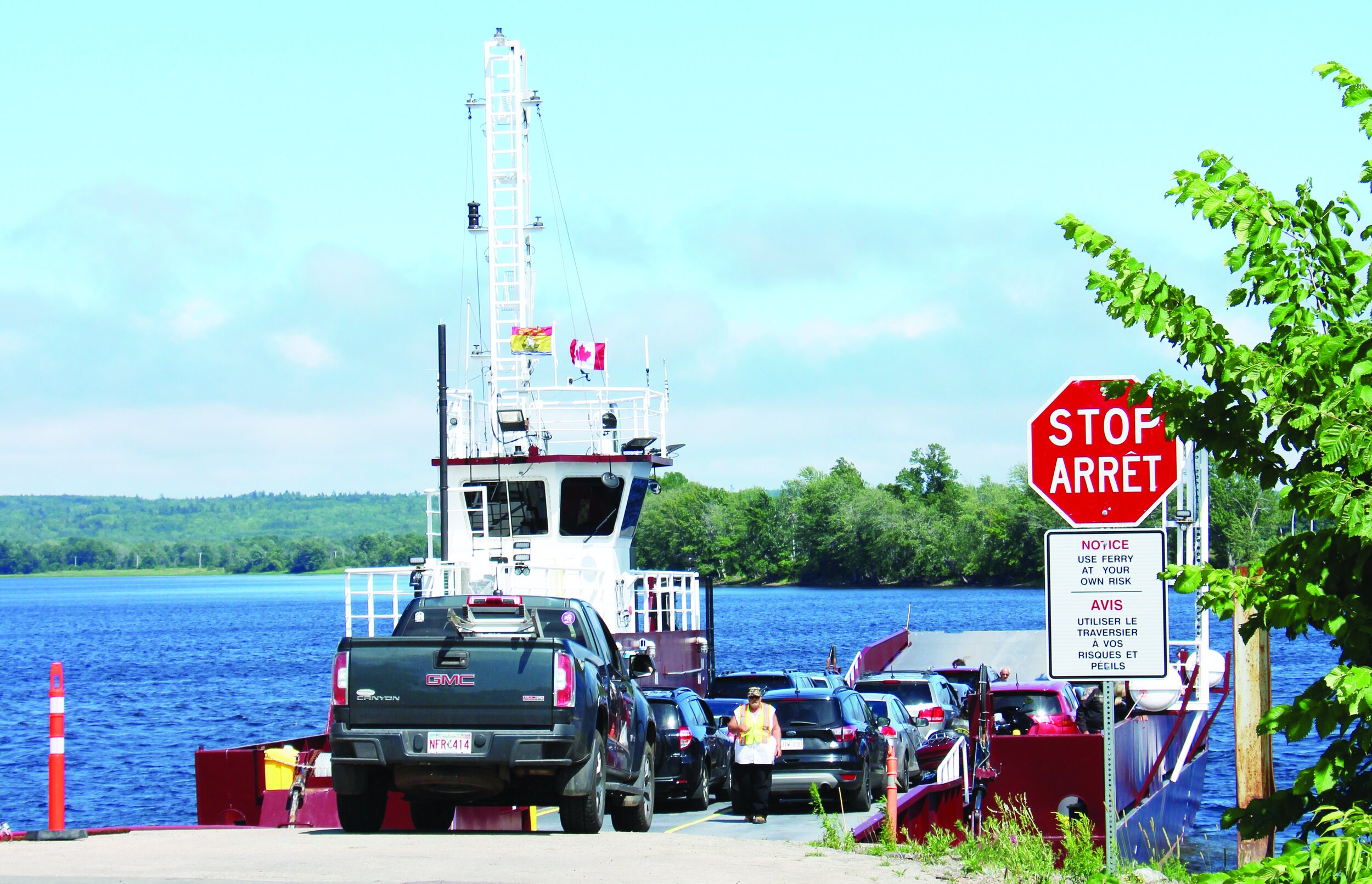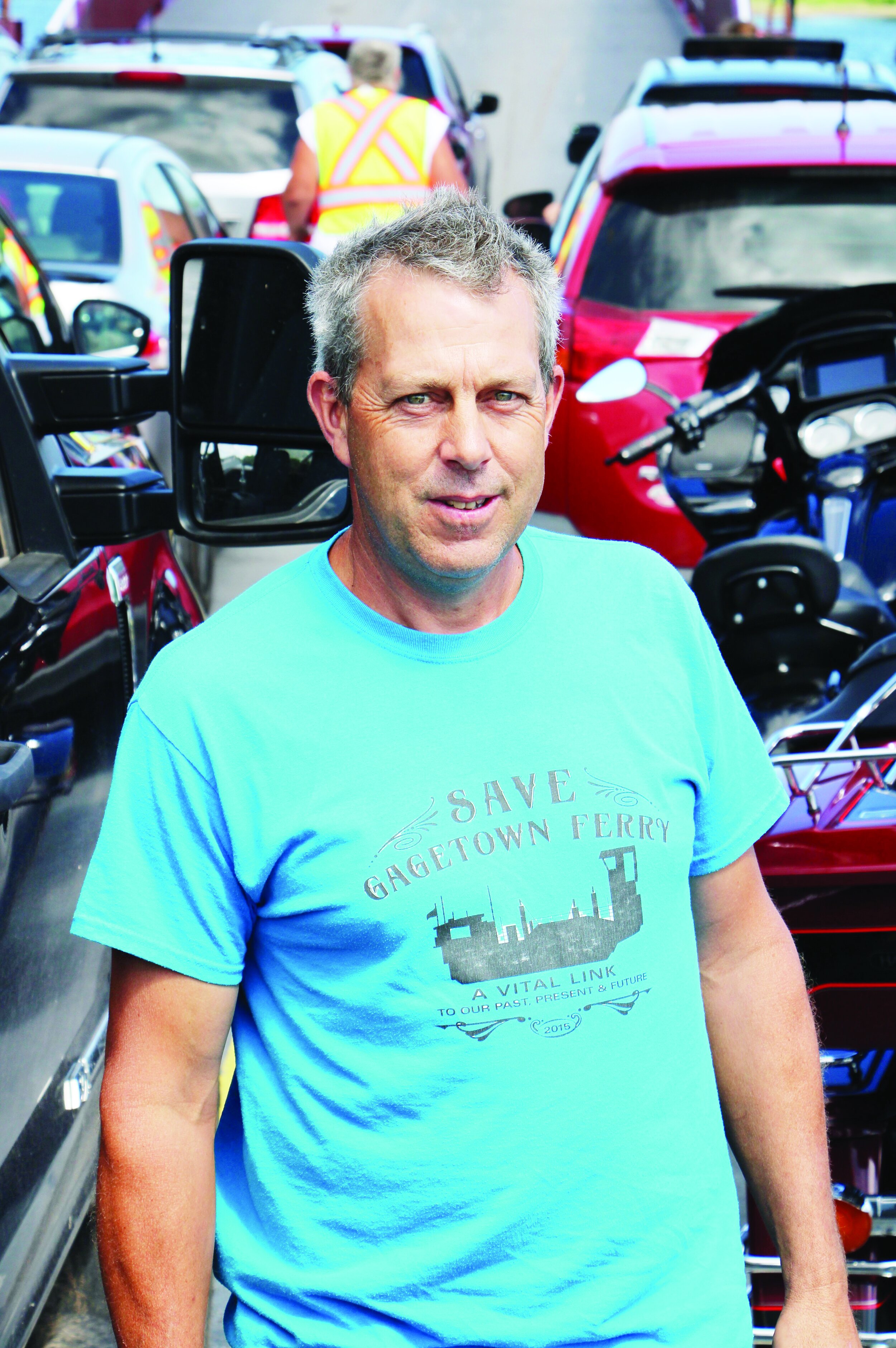Farmers at forefront of successful ferry fight
/by George Fullerton
From their home in Queenstown, N.B., Hugh and Mary Harmon feast on a panoramic view that stretches for miles. As their property slopes to the east, the view, sequentially, includes Otnabog Lake, the tree-lined channel of the Saint John River, Musquash Lake, and the expanse of Washademoak Lake.
There is very productive farmland in Queenstown and up the river valley past Fredericton. The region includes intervales and islands that receive an annual nutrient load from the spring freshet. In addition to welcomed nutrients, the lowlands also receive a random deposit of driftwood and other debris carried in the spring floods. One of the critical spring chores is to manually collect, pile, and burn the flotsam to prevent damage to farming equipment later in the year.
The Harmons own and operate Lakefield Farm. They have a 65-cow beef herd and raise 30,000 broiler chickens on an eight-week cycle.
Hugh Harmon moved to Queenstown from Long Island, New York, with his family as a youngster. He was one of nine children. In addition to farming and woodlot activities on their 300-acre property, his father and brothers established a cabinetry shop – Queenstown Industries. The Harmon family embraced their new community.
Harmon pointed out that in his youth, the community included many small but very efficiently operated farms. He warmly recalls the community spirit and support the farmers and others in the community shared. In the intervening years, the small farms became unprofitable and many became inactive. As farms closed down, the population dwindled.
He added that there is now an influx of new people into the community who, for the most part, are retired or commute to Fredericton and Oromocto for work. Some of the younger newcomers have begun homestead-type farm operations and small market gardens.
Following high school, Harmon went to work in the cabinet shop and maintained his desire to build the farming operation.
He and his wife were married in 1989. In 2001, he ended his 11-year cabinetmaking career and began farming full time.
POULTRY PRODUCTION
In 2003, Harmon was approached by his neighbour Stirling Nickerson, who was retiring from farming. Nickerson offered to sell his farm, which included two broiler barns, to the Harmons. With financing in place, the Harmons, with children Matthew, Luke, and Elizabeth, added poultry production to their beef operation.
“The poultry operation brought changes to our farming, with poultry management becoming the first priority and beef chores fitting in around the eight-week bird production cycle,” said Harmon. “For example, even if we have excellent haying weather, we have to make sure the bird barns are cleaned out, disinfected, and set up for the next flock. In addition to Mary taking an active role in farm management and chores (as well as the school bus run), our success is supported by Myles Scovil, who has been working for us some 16 years.”
Harmon confessed that raising beef cattle is where his heart is, adding that the quality of one’s cattle is a reflection of the farmer. The Harmons have achieved a high mark on the quality scale. Breeding is currently with three bulls. A Hereford bull is used on heifers and late calvers, while a Charolais and a Limousin-Simmental cross spend the summer with the main herd of mature cows.
Heifers and late calvers summer on pasture on the farmstead, while the main herd is scowed to pasture across the river in Jemseg, where the Harmons own 300 acres. The herd is home in the winter, housed in run-in shelters. The cattle yard consists of concrete pads. Manure is spread in the spring and autumn. Winter feed includes silage, dry hay, and free-choice mineral supplements.
Hugh pointed out a small gambrel-roofed barn that was built by Stirling Nickerson.
“Stirling had seven stanchions in that barn,” said Harmon. “I began raising heifers and now every year we select seven heifers and raise them on forage and some rolled oats. The daily contact with the young animals allows them to become very familiar with human contact, which makes cattle management calm and very enjoyable as they mature.”
He conceded that occasionally a mature cow will let her attitude drift and move herself up on the cull list.
It’s easy to recognize the impact of the heifer-raising regime out on pasture. The Harmon cattle are familiar with people, even strangers, and move to make contact with Harmon. A couple of strangers arriving with the farmer are no threat or concern for the herd.
INTERVALE FARMLAND
“I was interested to expand our beef operation and I found an opportunity to purchase 300 acres of land along the river,” said Harmon. “The property is in Jemseg, which is a short trip across the Saint John River, very close to the Gagetown ferry landing. It is only 17 minutes from our home farm if we hit the ferry right.”
The property is fertile intervale land on five kilometres of riverfront. It’s been in agriculture production since Acadian settlement in the 1600s. Harmon said that he sees remnants of berms and canals created by the first European settlers, as well as foundations of buildings that were constructed by more recent owners. The property includes a 90-acre hayfield with the balance in pasture.
The Jemseg pasture is divided into six paddocks separated by single-strand electric fence, which extends into the river to ensure the cattle remain in their assigned paddocks until switch time. The Harmons make silage and hay on the home farm first and save haymaking on their Jemseg property for August.
The Harmons were excited to acquire the Jemseg farmland and had big plans for extending the operation. However, excitement dulled first when a weight restriction was placed on the Gagetown-Jemseg ferry and then when the ferry service was cancelled by the previous Liberal provincial government in 2016 as a cost-saving measure.
Harmon said the ferry has long been a critical link for area residents, including tourism operators and farmers working on both sides of the river. With the closing of the ferry service, the Harmon family’s voices joined hundreds of others protesting that the shutdown would have a devastating impact on the region.
“We were determined not to lose our ferry operation without a fight,” said Harmon. “We had a great number of passionate people come forward to support continued ferry service. Notably, Wilf Hiscock, who operates a U-pick/commercial apple orchard near the village of Gagetown, became our key organizer to lead a protest focused on reinstating the ferry service. We formed a very talented committee. And our efforts included lobbying, signs, petitions, media interviews. We gained support from opposition parties, significantly from MLAs who reside in communities served by river ferry services.”
Despite fervent protest, the ferry did cease operation and the vessel was sold at auction for a paltry $40,000, while a new ferry costing $8 million was being constructed for the Belleisle run on the lower Saint John River watershed.
The Harmons and others were eventually rewarded for their efforts when the Gagetown-Jemseg ferry resumed service in June of this year.
“Businesses in the village of Gagetown have rebounded significantly since the ferry service has resumed,” said Harmon. “People are very happy to have the service and it is well used with a lot of traffic. This summer, getting our hay home will be a lot faster and a lot safer with the ferry service. We are grateful for the work our community has given to bringing back the service.”













